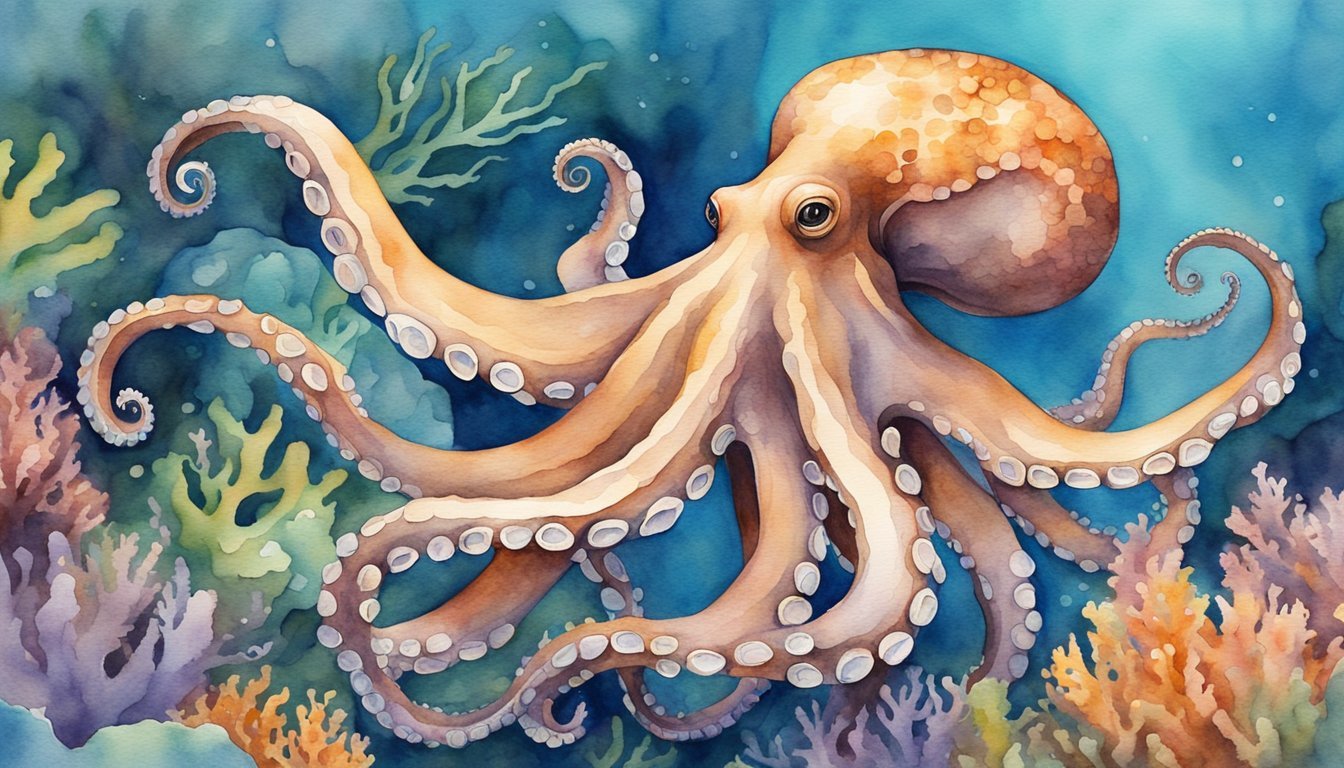Biology and Physiology of Octopuses
The biology and physiology of octopuses reveal a complex and intriguing design, unique among marine life. These invertebrates boast a range of remarkable physical traits and biological systems that enable their survival in the ocean’s depths.
Anatomy and Physical Traits
Octopuses belong to the class Cephalopoda, a group that includes squids and cuttlefish. Their most notable physical characteristic is their eight arms, each lined with suckers capable of tasting and grasping. The arms can regrow if lost, demonstrating the octopus’s ability to heal and adapt. These creatures also house a siphon, used for locomotion and expelling ink, and a hard beak, which is their only solid part, used to crush prey.
Octopuses vary greatly in size and weight, from the small O. arborescens to the giant Pacific octopus, which can reach an arm span of almost 9 metres. Their skin contains chromatophores, allowing for swift changes in color and texture, a skill used for camouflage and communication.
The Wonders of Cephalopod Blood
Cephalopods, including octopuses, have blue blood due to a copper-containing protein called hemocyanin, which is more efficient in low-oxygen environments. This adaptation is particularly useful given their deep-sea habitats. Unlike humans, octopuses possess three hearts, with two dedicated to pumping blood through the gills, and one for circulation through the rest of the body. Their blood is essential for transporting nutrients and gases, but it also holds a fascinating feature: some species have venom within their saliva, used to incapacitate prey.
Behavioral Characteristics and Interaction

The octopus is a highly intelligent invertebrate known for its remarkable behavior and diverse interaction within the oceanic realm. This section delves into their sophisticated hunting tactics, complex life cycle, and their exceptional cognitive abilities which are a subject of intrigue in the scientific community.
Hunting Tactics and Diet
Octopuses exhibit advanced hunting strategies, capitalizing on their ability to blend into their surroundings thanks to their excellent camouflage. They feast on a varied diet consisting of crabs, shrimp, and fish. Most species, including the common octopus, prefer to pounce on their prey, enveloping it with their arms and pulling it towards their mouth. Their beaks are used to puncture shells of crustaceans or mollusks, and they can inject paralyzing saliva to immobilize their victim.
Reproduction and Life Cycle
The life cycle of an octopus is both fascinating and tragic. After a complex mating ritual where the male octopus transfers spermatophores to the female using a specialized arm called the hectocotylus, the female lays eggs. She may lay thousands of eggs, which she guards and cares for until they hatch. After the eggs hatch, the larvae may drift as plankton before settling to the bottom. The typical average lifespan is short, often no more than a couple of years, and most octopus species die shortly after reproduction.
Intelligence and Learning
Octopuses have a reputation for being extraordinarily intelligent. They exhibit complex behaviors such as opening jars, navigating through mazes, and escaping from enclosures. Their large brains and sophisticated sensory capabilities allow them to learn and remember solutions to problems. For instance, the giant Pacific octopus, one of the largest species, uses tools like rocks and shells for defense and hunting. They can even change color not only to camouflage but also to communicate with other octopuses during interactions.

